Ukrainians To Train On F-16s In The United States
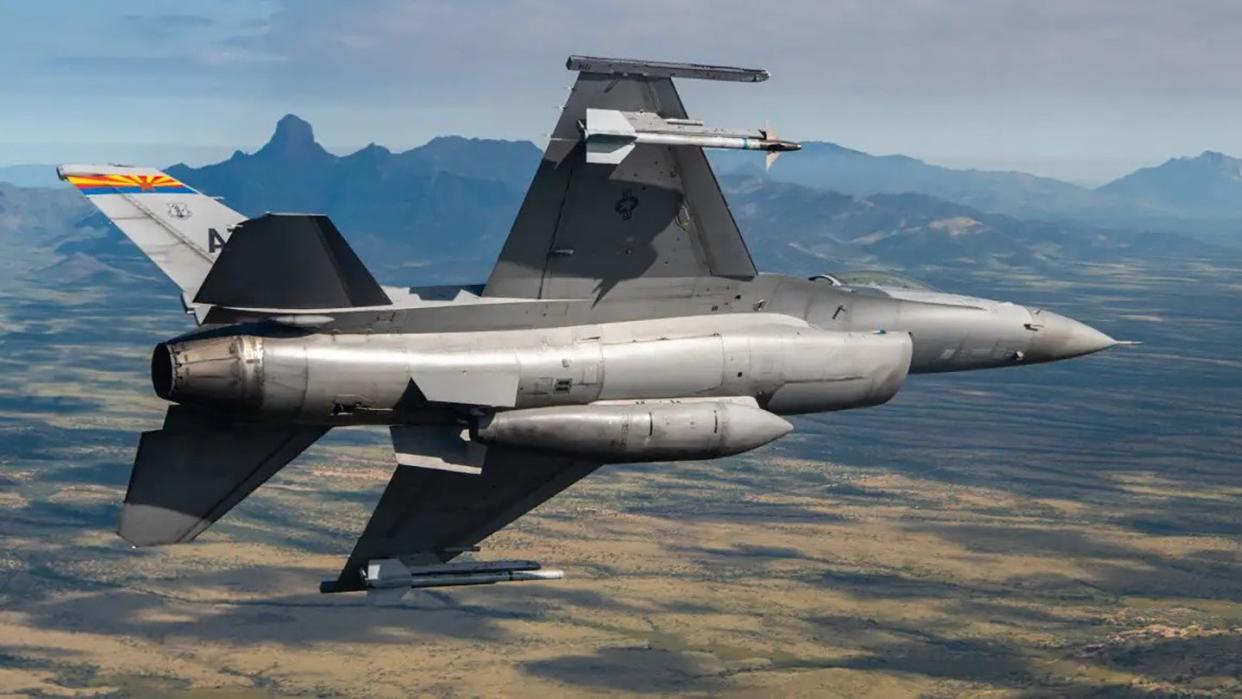
- Oops!Something went wrong.Please try again later.
In a move to help ensure a steady pipeline of capable pilots and maintainers for the dozens of F-16 Vipers that have been promised to Ukraine, the Pentagon on Thursday announced training for those personnel will begin taking place in the United States next month.
Language training for pilots will take place at Lackland Air Force Base in San Antonio, Texas in September followed by flight and aircraft maintenance training in October at Morris Air National Guard Base in Tucson, Arizona, facilitated by the 162 Wing.
The training will involve “several pilots and dozens of maintainers,” Air Force Brig. Gen. Pat Ryder, the Pentagon’s top spokesman, told reporters, including from The War Zone, Thursday.
As we have reported before, training for Ukrainians in language and operational skills is already taking place in the U.K, and Denmark, with many other countries pledging to take part as well.
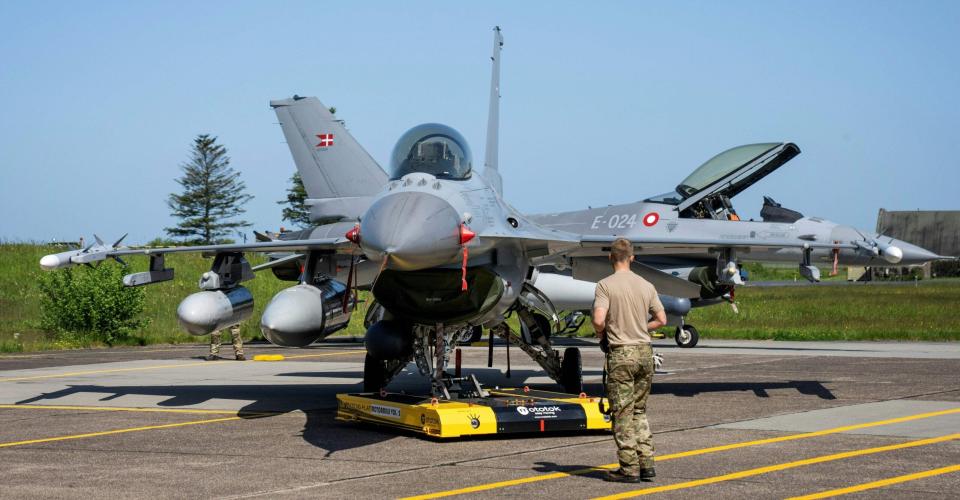
The Pentagon - knowing those nations will reach a capacity limit in the number of aircraft and pilots they have to train Ukrainians - “is leaning forward to assist with this effort,” Ryder said.
The first step is ensuring that the Ukrainians are sufficiently fluent in English to communicate with their international counterparts and better understand how to operate the Vipers.
“Although some Ukrainian pilots have English language skills, we are anticipating that all the pilots coming to the United States will require some level of additional English language instruction, given the complexities and the specialized English that's required to fly these aircraft,” said Ryder. “Therefore as mentioned, these pilots will also be conducting English language training at Lackland.”
The Defense Language Institute English Language Center at Lackland is a prime hub for English language instruction across the Defense Department.
English language proficiency of Ukrainians has been a long-standing concern when it comes to training them how to fly an F-16, which is far more advanced than Ukraine's current fleet of mostly Soviet-designed Su-27 Flankers and MiG-29 Fulcrums. There are several challenges to ensuring Ukrainian pilots are not just able to fly the fourth-generation fighters, but to be able to do so in combat and in sufficient numbers.
Language concerns were raised during a Baseline Pilot Assessment (BPA) of two Ukrainians, flying simulators on the ground, that the Air Force conducted at Morris this past Spring.
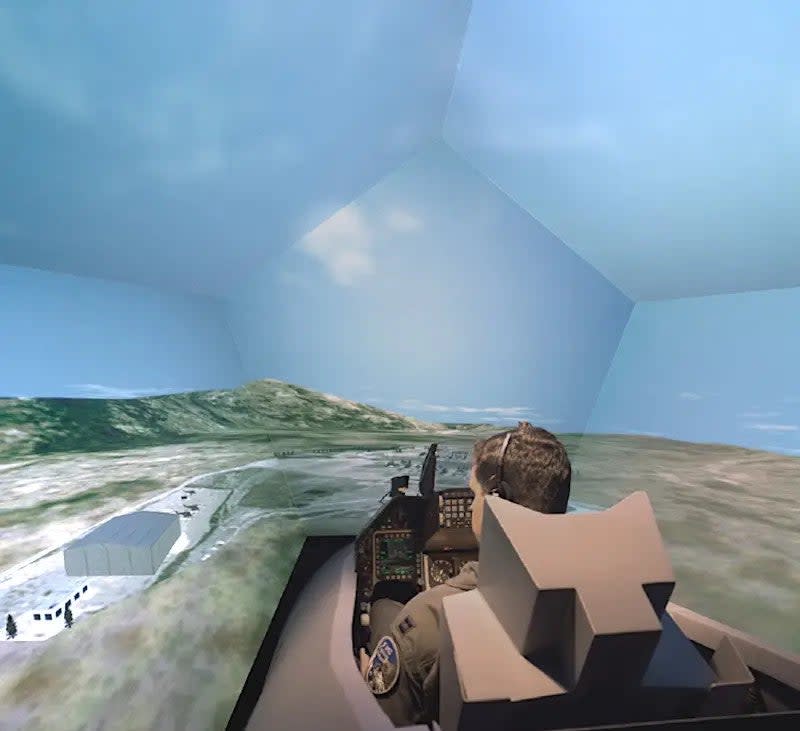
The BPA report raised issues about the Ukrainian pilots being able to read instruments and displays. The English skill level of either pilot from Ukraine is unclear, as is how much of the assessment may have been conducted with the help of interpreters. It does say that "there was noted improvement of English aptitude over the two-week assessment."
Ultimately, the report concluded that "given the skillset demonstrated by the UKR AF pilots, and the requirement to develop a specialized syllabus only focused on min required tasks, ~4 months is a realistic training timeline." This is broken into approximately eight weeks of transition training, two additional weeks or so of low-level step-down training, and then around three weeks of air-to-air combat training.” You can read more about this in our story here.
Regardless of any past assessments, it will take until next year before Ukrainian pilots hit the skies and many more before those pilots reach full combat proficiency in sufficient scale, the general in charge of U.S. and NATO air operations told reporters in a briefing last week.
Even if Ukraine does get F-16s next year, it won't likely have enough pilots who can fly them into combat to anywhere near their full potential before 2027, said U.S. Air Force Gen. James Hecker, head of U.S. Air Forces in Europe (USAFE), as well as NATO's Allied Air Command and U.S. Air Forces Africa (AFAFRICA).
“You can get proficient on some weapons systems fairly quickly," said Hecker. “It takes a while to build a couple of squadrons of F-16s and to get their readiness high enough and their proficiency high enough. This could be four or five years down the road.” You can read much more about Hecker's assessment in our story here.
Training Days
Once the pilots coming to the U.S. next month achieve language proficiency, they will be assessed on their individual pilot skill levels by the 162nd Wing at Morris, Ryder said Thursday.
The timeline for that training, he added, depends on those skills.
Training for new F-16 pilots in the U.S. typically takes about eight months, he said. For a more experienced pilot, it could take five months.
Four months for a very basic F-16 skill set is very close to the training schedule estimates that F-16 pilots provided to The War Zone for a feature published back in February. Exactly how relevant that minimal skill set would be over the battlefield is still a question that needs to be answered.
Ryder told The War Zone he did not know the experience level of the pilots that will come to the U.S. for training, deferring the question to the Ukrainians.
The pilots will undergo several phases of training, from basic flight training to the introduction of basic fighter maneuvers, formation flying and weapons employment, Ryder said.
“This is going to help you transition from a basic pilot mindset to a fighter pilot mindset,” said Ryder.
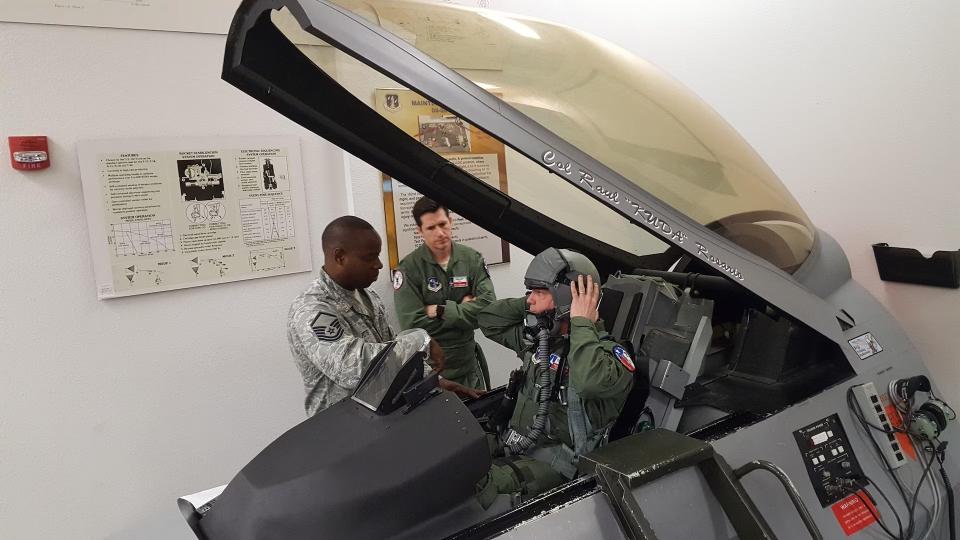
“There's going to be some type of ground training involved. We've all seen the images of people going through centrifuge training to learn how to cope with G forces,” he said. “There will be additional training on air combat maneuvering, tactical intercepts, close air support, suppression of enemy air defenses, and all of that leading up to your mission qualification training, which then allows your instructor to certify that you're combat ready.”
Asked if the Ukrainians would be trained on how to fight against Russian tactics in the ongoing full-on invasion, Ryder said “the training in the U.S. will be the fundamental fighter pilot training...but combat experience in combat training is also important. We'll know to follow the coalition [and] to look at how best to prepare these pilots so that they can be successful in the air when those aircraft are employed.”
Maintaining decades-old 4th generation western fighters in what is still a war zone is another key goal of this process. The Ukrainian maintainers will learn how to sustain “a high-performance aircraft with a significant logistic and maintenance tail" and to “maintain this aircraft so that it can stay in the air,” Ryder said.
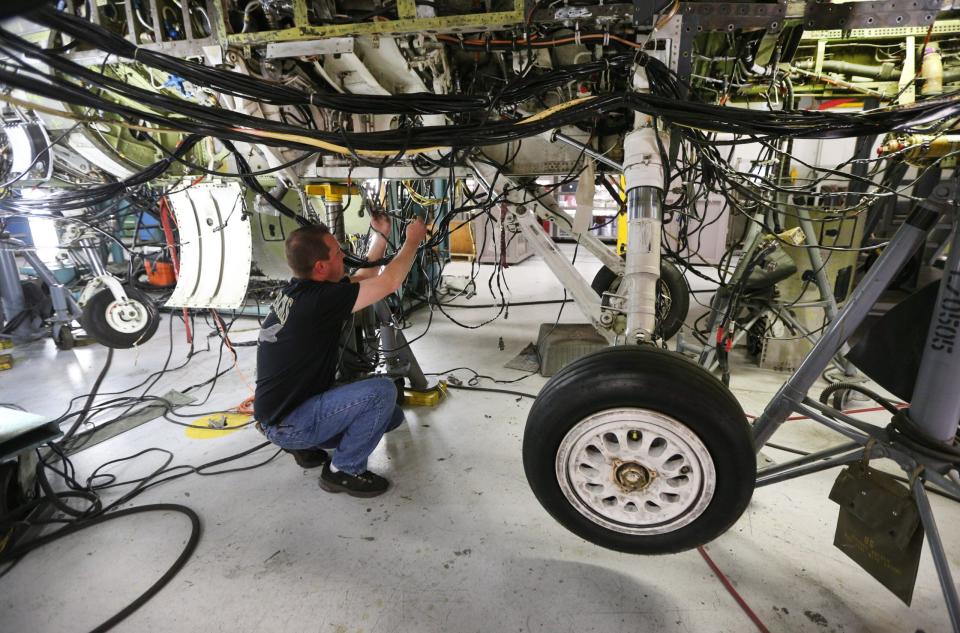
Morris was chosen to train the Ukrainians “because the 162nd Wing is the Air National Guard's premier F-16 training wing and they have deep experience in terms of training international pilots.”
The wing, he added, has trained pilots and maintainers from upwards of 25 different nations.
F-16s To Ukraine
The effort to provide Vipers to Ukraine really ramped up last week when the U.S. government assured Denmark and the Netherlands it would expedite approval of any requests to transfer F-16s they submit. That's required because all Vipers exported to foreign countries are governed by U.S. export controls and further approval from American authorities is required to legally transfer them to third parties like Ukraine. You can read more about that in our story here.
The U.S. also signaled it would do more directly to speed the process of fielding the F-16s, which we are clearly seeing now.
Earlier on Thursday, Norway announced it will be the third nation, after Denmark and the Netherlands, to provide F-16 Vipers to Ukraine.
Oslo, which had already agreed to train Ukrainian pilots how to fly Vipers, is “planning to donate Norwegian F-16 fighter jets to Ukraine, and will provide further details about the donation, numbers and time frame for delivery, in due course,’ Prime Minister Jonas Gahr Støre said in a statement posted on the Norwegian government website.
While Støre did not say how many Vipers will be heading or when, the Norwegian VG news outlet, citing its sources, reported that there may be between five and 10 aircraft.”
https://twitter.com/the_lookout_n/status/1694723697263910929
Norway has a stock of 74 Vipers, but only 56 of these were updated under the MLU program. Additionally reducing that fleet, 32 aircraft are being transferred to Romania where they will replace that country’s recently retired MiG-21 LanceRs. Should the Draken contractor deal for ex-Norwegian jets also go through, that would leave only a dozen or so F-16s available to Ukraine. The Norwegian jets are widely considered to be among the best-maintained F-16s within the NATO inventory and would very likely require little in the way of refurbishment prior to delivery. You can read more about that in our story here.
As we previously reported, Ukraine will receive dozens of F-16s from Denmark and the Netherlands.
The exact number is unclear. On Sunday, Ukrainian President Volodymyr Zelensky said he and Dutch Prime Minster Mark Rutte agreed that 42 F-16s will be “transferred to Ukraine once our pilots and engineers have completed their training.” But Denmark also announced it will provide 19 F-16s to Ukraine. Danish authorities previously announced plans to have the last of their existing F-16AM/BMs out of service by 2025, two years earlier than expected, which helped pave the way for sending at least some of those aircraft to Ukraine. You can read more about that in our story here.
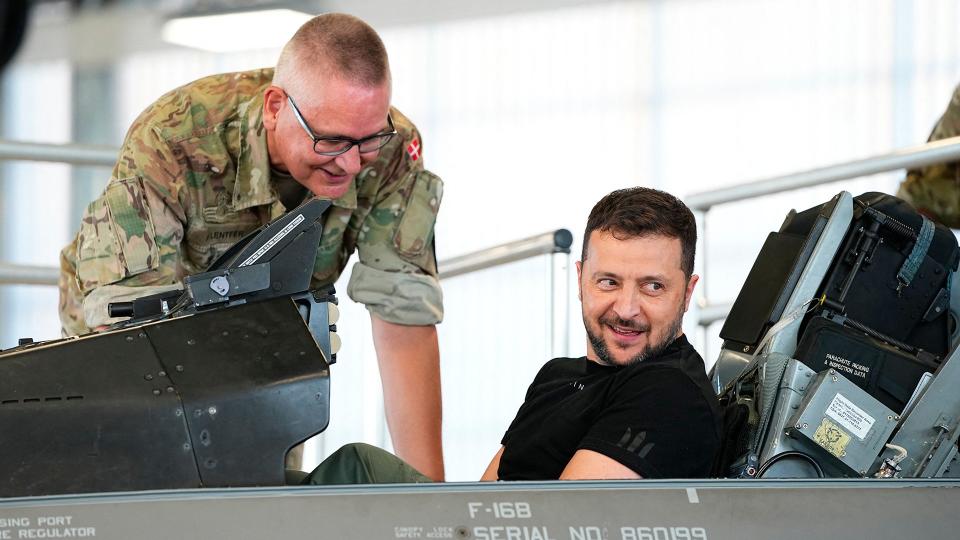
Rutte declined to say how many of the Netherlands’ 42 F-16s would be provided to Ukraine, so the total between the two countries could be as high as 61, which doesn’t even include the ones Norway promised today.
There were no hard timelines offered on when the jets would be delivered or become operational.
Repeating frequently expressed sentiments about when F-16s might actually be flying over the skies of Ukraine, Rutte on Sunday said that it’s not something that will happen in the near future.
“The F-16s will not help immediately now with the war effort. It is anyway a long-term commitment from the Netherlands,” the Dutch leader said. “We want them to be active and operational as soon as possible. … Not for the next month, that’s impossible, but hopefully soon afterward.”
At the Pentagon Thursday, Ryder reiterated that the delivery of the aircraft depends on how the training goes.
“We're talking months, not weeks, obviously, and as we said, from the very beginning in May, this is about the long-term support to Ukraine. This is not about the counteroffensive that they're conducting right now.”
Ryder was asked if pilot training would be accelerated so that those aircraft would hit the skies sooner.
“Obviously we're going to work as fast as we can,” he said. “But what you don't want to do is you don't want to rush the pilot and train them in a high-performance combat aircraft and then put them in harm's way not fully prepared.”
Clearly, with the announcements in Washington and Oslo today, there is an increasing sense of urgency about providing Ukraine with a more advanced aircraft to counter Russia’s superior Air Force and still robust air defense systems.
How and when that urgency will effect change in the air over Ukraine remains to be seen.
Contact the author: howard@thewarzone.com

